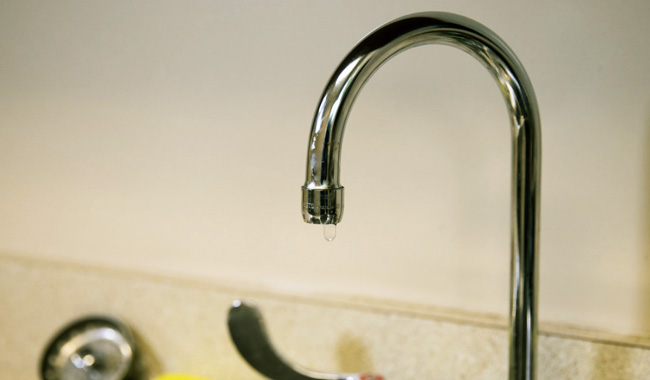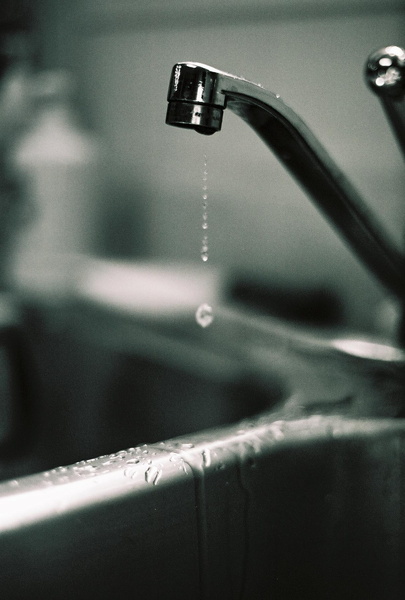Here below you can find lots of very good resources regarding Health Risks Posed by Leaking Faucets.

Introduction
A leaky faucet might feel like a small aggravation, yet its effects expand far beyond the occasional drip. Recognizing the effects of a leaking faucet is crucial for both home owners and the environment. In this write-up, we'll explore the different influences of this common home issue and why addressing it without delay is vital.
Sources Of Leaky Faucets
Leaky faucets can result from a variety of elements, including wear and tear, high water pressure, and rust. Over time, the constant use of faucets can bring about damaged seals and gaskets, creating leaks to develop. Furthermore, extreme water stress can put strain on plumbing components, bring about leakages. Deterioration and corrosion can additionally damage tap parts, making them prone to leak.
Water Wastage
Among the most considerable consequences of a dripping faucet is water wastefulness. Even a small drip can amount to gallons of drainage with time. This not only increases water costs but additionally adds to water shortage and environmental destruction. Addressing dripping faucets quickly is crucial for saving this priceless resource and decreasing its impact on the earth.
Financial Influence
Along with drainage, leaky taps can additionally have a substantial economic influence. Raised water bills are a direct consequence of water wastage, costing house owners numerous dollars each year. Moreover, the cost of repairing water damages caused by leaks can be significant, particularly if left ignored for an extensive duration.
Environmental Impact
The environmental influence of leaking faucets extends beyond water wastefulness. By saving water, house owners can contribute to more comprehensive efforts to mitigate water shortage and protect all-natural communities. Sustainable alternatives such as rainwater harvesting and water-efficient components can even more decrease the ecological impact of household water usage.
Technical Solutions
Advancements in technology have led to the development of smart taps and water-saving tools that help minimize water wastage. Smart faucets use sensors to discover activity and adjust water flow appropriately, reducing waste without compromising benefit. Water-saving gadgets such as aerators and low-flow showerheads are likewise reliable in conserving water without jeopardizing performance.
International Perspectives
While leaky faucets might appear like a localized problem, they contribute to wider worldwide obstacles such as water scarcity and climate change. In regions already dealing with water stress and anxiety, every decline counts, making leakage prevention and fixing necessary. By embracing water-saving techniques and purchasing sustainable innovations, homeowners can play their component in resolving these pushing worldwide problems.
Regulative Measures
Federal government regulations play an essential duty in reducing the impact of leaky taps and promoting water conservation. From developing codes that need water-efficient components to water-saving rewards and rebates, policymakers have a series of tools at their disposal. By implementing and implementing these guidelines, federal governments can ensure that home owners prioritize water preservation in their lives.
Neighborhood Impact
Attending to leaking taps calls for collective initiatives at the community level. By elevating awareness regarding the relevance of water conservation and offering resources for leak detection and repair service, local authorities can empower property owners to take action. Initiatives such as water-saving rebate programs and leak detection campaigns can incentivize actions adjustment and promote responsible water usage.
Case Studies
Real-life instances of the effect of dripping taps underscore the value of proactive upkeep and prompt fixings. From water damages to escalating water costs, the consequences of ignoring leakages can be serious. By sharing these case studies, homeowners can much better comprehend the significance of attending to leaking taps without delay.
Educational Campaigns
Educational campaigns play a vital function in raising understanding about the impacts of leaky faucets and promoting water preservation practices. Through workshops, seminars, and online resources, home owners can discover how to identify and fix leakages themselves. By empowering individuals with knowledge and devices, instructional campaigns can cultivate a culture of accountable water use within communities.
Health and wellness Worries
Leaky faucets can create conducive settings for mold and mildew and mold development, posturing health and wellness dangers to occupants. The visibility of mold can aggravate breathing issues and allergic reactions, especially in susceptible people. Additionally, water damages resulting from leaks can jeopardize the structural stability of buildings and cause pricey repair services.
DIY vs. Specialist Fixing
When confronted with a leaking tap, home owners commonly discuss whether to attempt repair work themselves or work with a specialist plumber. While do it yourself repairs can conserve money, they may not always address the hidden concern efficiently. Specialist plumbings have the competence and equipment to identify and repair leaks correctly, guaranteeing long-term options and satisfaction for home owners.
Safety nets
Stopping leaking faucets needs regular upkeep and proactive actions. Simple jobs such as changing worn-out washers and seals can protect against leakages from establishing. Additionally, upgrading to top notch components and lowering water stress can help lengthen the lifespan of faucets and minimize the danger of leakages.
Verdict
Finally, the effects of a dripping faucet extend much past the periodic drip. From water wastage and raised water expenses to health issues and ecological effect, the consequences of disregarding leaks can be significant. By dealing with leaking taps immediately and adopting water-saving techniques, house owners can alleviate these results and contribute to an extra sustainable future.
Causes and Consequences of a Leaky Faucet
Although it’s a relatively common issue, many people don’t know what causes a leaky faucet. Additionally, few homeowners are familiar with the consequences of leaky taps, causing them to ignore the problem. However, much of the damage caused by leaky faucets can be prevented by reacting swiftly.
In this article, we’ll provide a better understanding of leaky faucets by listing their causes and consequences.
What causes a leaky faucet?
Many internal pieces of the faucet responsible for turning the water on and off can break. Consequently, they can’t function correctly and will give rise to leaks. Here are a few common causes of leaks:
Loose washers
The washer opens and closes when turning the faucet on and off. This movement produces friction, causing wear and tear. Over time, the washer gets worn out and won’t fit closely to the valve seat, leading to a leak.
Worn out O-rings
O-rings seal gaps between the internal parts of the faucet. If they fail, water can seep through these gaps and result in a leaky faucet.
Poor seals
Many faucets have inlet seals that let water freely flow when turning the faucet on and stop when it is turned off. If there’s too much sediment or water pressure, the seals can suffer damage and cause the faucet to leak.
Corroded valve seat
The valve seat sits at the bottom of the faucet’s mechanism. It plays a part in turning the tap on and off, and it can corrode due to repeated usage. If so, water will be dripping around the handle area.
Worn out faucet cartridge
Single-handle faucets have a faucet cartridge that helps control the water flow. Due to normal wear and tear, the cartridge can start leaking.
What are the consequences of a leaky faucet?
High water bills – Dripping faucets can lead to much higher water bills due to the amount of water wasted. In particular, as much as 17 gallons of water can be wasted during a single day if a faucet has about one drip per second. Mold and rot – Mold can develop in any moist area, making the area around leaky faucets an ideal breeding ground. Also, any wooden elements affected by the leak can eventually rot. Overflows and drain clogs – If the leak persists for a while, it can cause a lot of stress on the plumbing system and lead to overflows and drain clogs. Water stains – Minerals accumulating in the sink due to a leaky faucet can be quite tricky to remove. In the worst-case scenario, you might need to buy a new sink. https://www.jimmyjoesplumbing.com/blog/causes-and-consequences-of-a-leaky-faucet

I was made aware of that write-up about through a pal on a different domain. Sharing is good. Helping others is fun. Thank you so much for your time invested reading it.